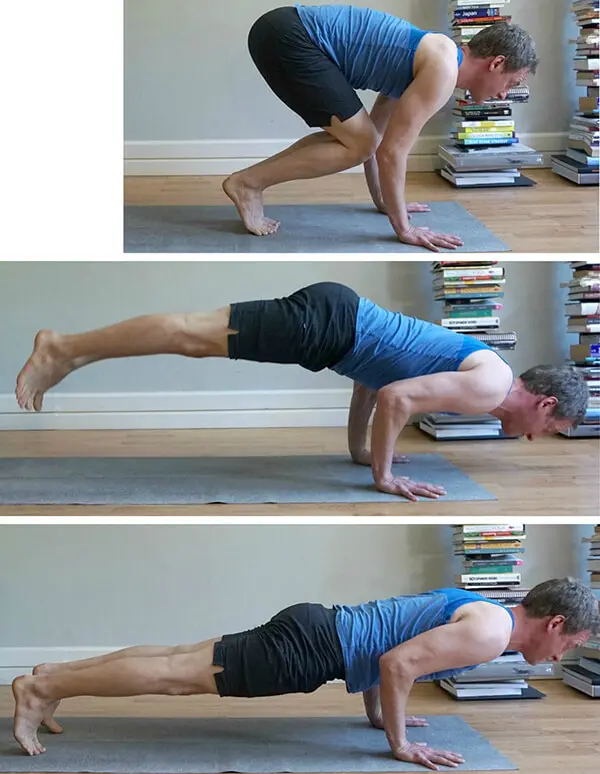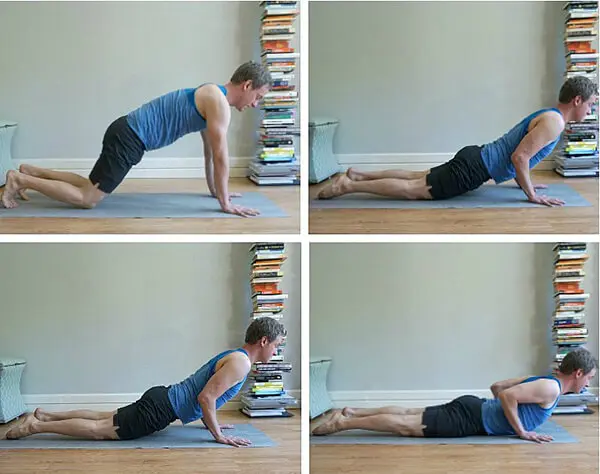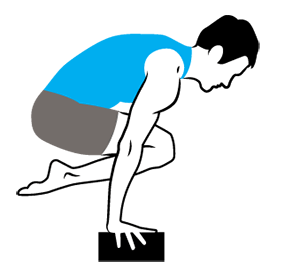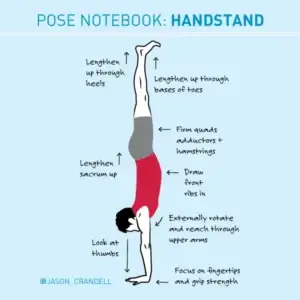How to Do Chaturanga Transitions Safely
OK, now onto the regularly scheduled program.
Since writing the Expert’s Guide to Chaturanga Parts I, II & III, I’ve gotten tons of questions from readers about transitioning to Chaturanga. This makes sense. After all, Chaturanga is always sandwiched between Plank and Up Dog. So, it stands to reason that Plank is going to affect Chaturanga and Chaturanga is going to affect Up Dog. Students and teachers also need advice about coming into Chaturanga—or lowering all the way to the floor—when they’re dealing with a shoulder issue.
The two most common transitions to Chaturanga are lowering down from Plank and jumping back from Uttanasana (Standing Forward Bend). So, let’s look at the best practices for these scenarios.
Lowering to Chaturanga from Plank
Lowering to Chaturanga from Plank is a foundational transition in vinyasa yoga. Moving slowly and precisely will strengthen your entire body, especially your core and upper-body. Transitioning with control also lengthens your breath and builds postural awareness. When students transition too quickly, they miss the opportunity to build strengthen and control. Even more, transitioning too quickly often results in a sloppy Chaturanga. So, if you’re moving quickly from Plank to Chaturanga, practice slowing the transition down in order to reap the benefits. If you’re not strong enough to slow down, bring one (or both of your knees to the floor).
QUICK TIP
The most important tip for making this transition skillfully is to move your body forward as you’re lowering down. Think about an airplane landing compared to an elevator lowering. The airplane is moving forward as it descends, while the elevator is moving straight down. You’re the airplane, not the elevator.
The key to doing this tip correctly is your feet. When you’re in Plank, you’re on the ball of your feet. When you transition to Chaturanga, you should rock forward to the tips of your toes.

HOW TO DO CHATURANGA TRANSITION FROM PLANK
Come into Plank Pose and notice that you’re on the ball of your feet. Simultaneously rock forward to the tips of your toes and bend your elbows. Feel your chest and shoulders moving forward while you’re bending your elbows and lowering half way to the floor. Engage your thighs, engage your core, and land in Chaturanga. Notice that you’re on the tip of your toes, not the balls of your feet. Although it’s beyond the scope of this article, you might also notice that being on the tip of your toes in Chaturanga makes the transition to up dog much more fluid and accessible.
Jumping from Uttanasana to Chaturanga
Jumping from Uttanasana to Chaturanga is strong, dynamic transition. In all of the modern schools of vinyasa yoga, this is another staple transition. The reason that this transition requires more strength than lowering from Plank to Chaturanga is simple: when you jump back from Uttanasana you have to deal with the momentum of jumping. More specifically, you have to slow down the momentum of springing into Chaturanga without dropping your upper-body too low and compromising your shoulders. But, when you can make this transition skillfully, few things in vinyasa yoga feel as smooth, integrated, and fluid.
QUICK TIP
There are two keys to jumping back with better control and, they’re related. First, you need to bend your knees more deeply and get closer to floor before you jump back. Second, you need to focus on pulling your chest forward as you jump your legs back. The first step brings your body weight closer to the floor so that you can control it better. The second helps you counterbalance the weight and momentum of your lower body moving back by bringing the weight and momentum of your upper-body moving forward.

HOW TO DO CHATURANGA TRANSITION – JUMP BACK
While you’re in Uttanasana prior to jumping back, bend your knees deeply. Place your hands on the floor in front of your shoulders. Get nice and low — almost like you’re going to do Bakasana. Look forward. Bend your elbows and lean your weight forward into your hands. Simultaneously, jump your feet back and pull your chest forward. You want these two motions to help counterbalance each other. Land lightly Chaturanga. Take this slowly and repeat it several times to help you integrate this new, more effective pattern.
Lowering to the Floor When You’re Managing a Shoulder Issue
If you’re nursing a shoulder issue and lowering into Chaturanga irritates it, the first step is to bring your knees to the floor. The second step is to focus on the front of your shoulders and your shoulder blades when you descend. You need to control both regions in order to keep your shoulders aligned and stable. Specifically, you want to pull the front of your shoulders (the head of your humerus bones) away from the floor and engage your scapular muscles and draw your shoulder blades toward each other.
QUICK TIP
If you try this approach and it still irritates your shoulder, my advice is to take a breath, back off, and avoid this transition for a while. People will still love you. It’s OK.
See also Essential Sequence: Yoga for Back Pain

HOW TO DO CHATURANGA WITH A SHOULDER ISSUE
From Plank Pose, bring your knees to the floor. Slowly roll down while keeping the front of your shoulders elevated. Meaning, don’t lead with your shoulders by dipping them forward and down toward the floor. Instead, keep drawing the front of your shoulders away from the floor and slowly lower your thighs, hips, navel, and front ribs to the ground. Again, keep the front of your shoulders lifted and your scapular muscles engaged while you do this.


